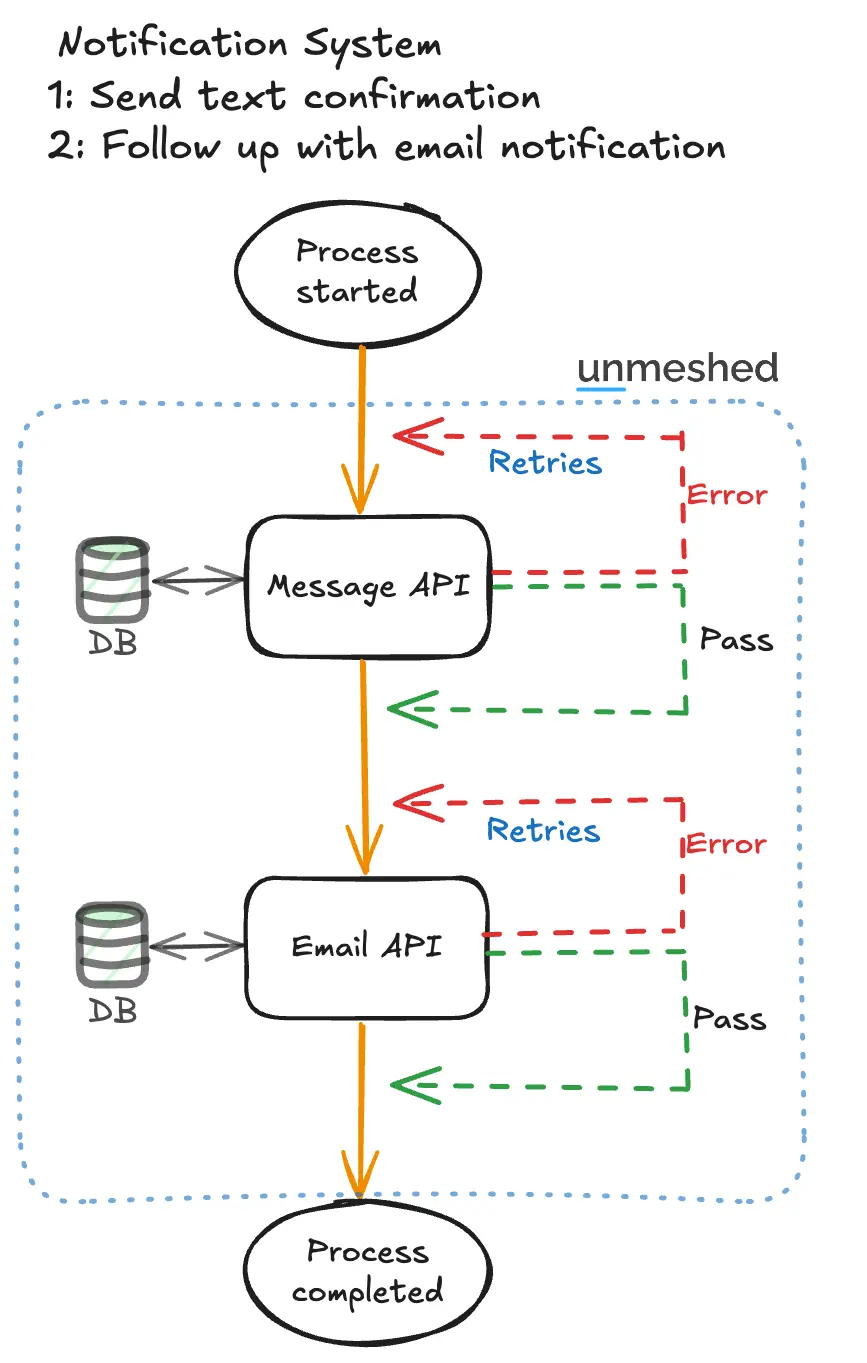From One API to the Next: Simplifying Sequential API Calls

Introduction
An API (Application Programming Interface) is a set of predefined rules and protocols that allows different software applications to communicate with each other . APIs are bridging one application to request and retrieve data or services from another application, service, or system. It allows developers to use predefined functions or endpoints to integrate external features, retrieve information, or trigger operations without needing to know the underlying complexities of the system. APIs provide benefits that make them a cornerstone of modern software development. They enable seamless communication between microservices, which is particularly vital as microservices architectures have become a preferred approach for building scalable applications.
Challenges on calling APIs
The seemingly simple task of calling one API and then another can quickly become a challenging endeavor when factors like reliability, error handling, and system constraints come into play. Let's explore why this process is more complex than it appears and how platforms like Unmeshed simplify the problem.
Challenges in Sequential API Calls
-
Reliability and Error Handling
Consider the scenario where you first call an API to send a text message and then call another API to send an email. If the first call succeeds but the second fails due to a temporary issue (e.g., network latency or service downtime), your system needs robust error handling to ensure eventual success without duplicating efforts. For instance, sending multiple text messages due to retries can lead to unnecessary costs and poor user experience. Handling such scenarios requires fine-grained control over retries and recovery strategies. -
Cost Sensitivity
Some APIs are expensive to invoke, such as sending transactional messages or emails. You can't afford to call these APIs multiple times unnecessarily. For example, if the email API fails after a text message is successfully sent, your system must handle this failure gracefully and retry intelligently without resending the text. -
Rate Limiting
Many APIs impose strict rate limits, which means your system must carefully balance requests to avoid hitting those limits. For example, a bulk email service may restrict you to 100 calls per minute, while a payment processing API may limit you to 10 requests per second. T o prevent breaches of these limits, you need a control mechanism to manage and queue API calls effectively. -
Monitoring and Visibility
Debugging and optimizing sequential API workflows can become a nightmare without proper observability. How do you determine which API is slowing down your process? What if a retry loop is failing silently?
How Platforms Like Unmeshed Help

A platform like Unmeshed addresses these challenges with a set of features tailored to API orchestration:
-
Chaining API Calls
Automatically coordinate workflows by chaining APIs together . For example, if you need to call a message API followed by an email notification API, Unmeshed ensures the sequence executes smoothly. -
Rate Limiting
Built-in rate-limiting capabilities allow you to define how many requests are sent to each API. The system automatically queues additional calls, ensuring compliance with API provider constraints while avoiding bottlenecks. -
Data Transformation
APIs often require specific data formats. Unmeshed can handle data transformation between calls, ensuring compatibility without additional development effort. -
Retries and Error Management
Intelligent retry logic ensures that temporary failures (e.g., a timeout while sending an email) are retried with appropriate backoff strategies. You can also configure fallbacks, such as sending a push notification if the email fails repeatedly. -
Visualizing Executions
Unmeshed provides a visual dashboard to monitor your API workflows in real-time. Track metrics like latency, success rates, and retry counts, enabling you to identify and resolve bottlenecks quickly.
Next Step…
By leveraging Unmeshed, you not only simplify your implementation but also make it robust, scalable, and cost-saving, ensuring seamless execution of even the most complex API workflows. API orchestration is a powerful tool for small and large-scale development teams managing complex microservices architectures. By centralizing and streamlining orchestration logic across services, businesses can enhance their system's performance and experience seamless scaling and evolution of their applications.
